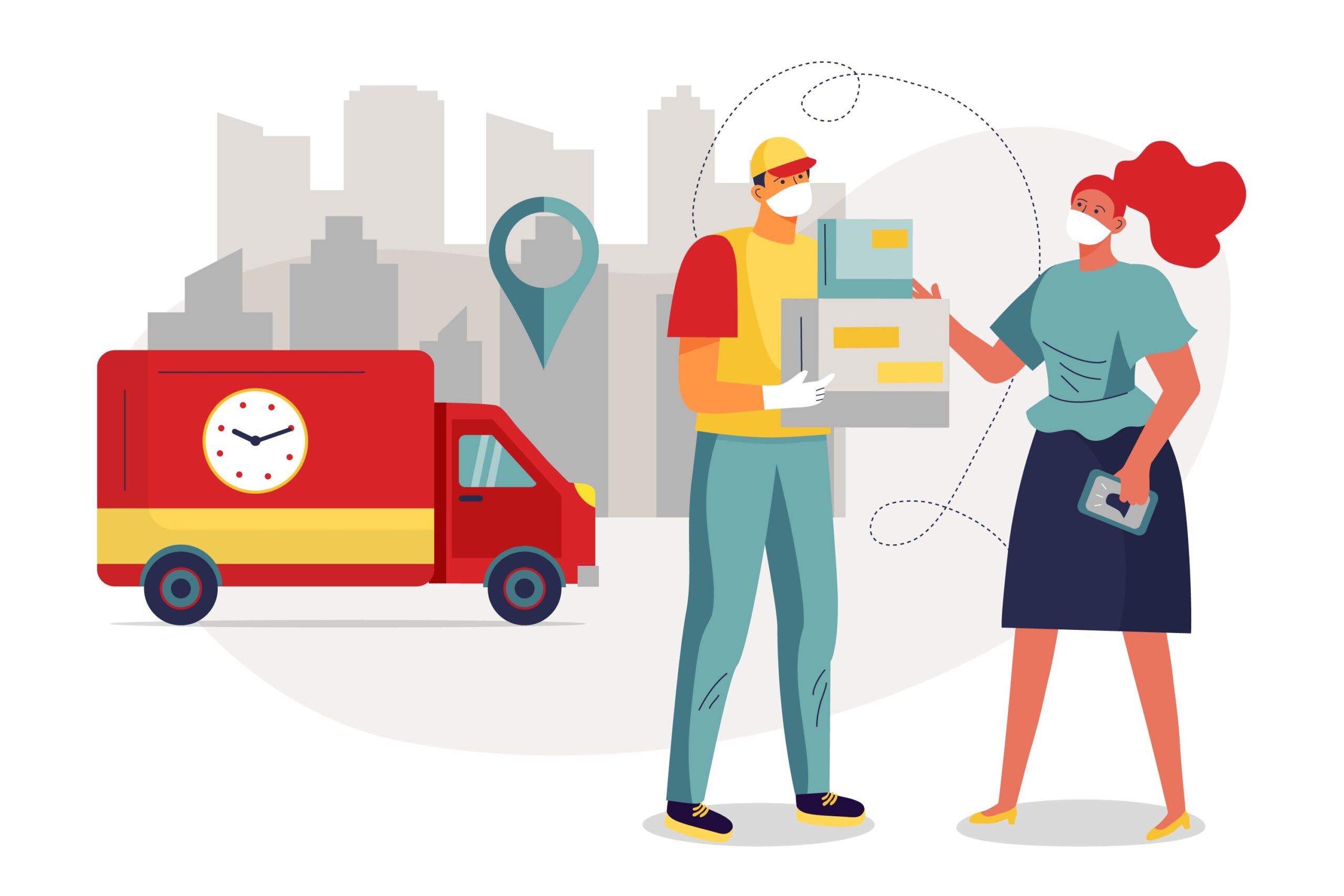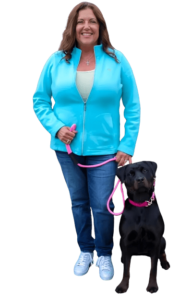What is Delivery Management Software? How It Works
Introduction
In today’s fast-paced world, efficient delivery is essential for business success. Whether you operate a small local bakery or manage a global e-commerce company, products must reach customers promptly and in good condition. Delivery management software (DMS) is a technology designed to help businesses streamline their delivery operations, enhance customer satisfaction, and reduce costs. But what exactly is delivery management software, and how does it work? Let’s explore this further.
What is Delivery Management Software?
Delivery management software is a digital tool designed to automate, organize, and track delivery operations. It assists businesses in managing the entire delivery process, from order placement to final delivery, by offering features such as route optimization, real-time tracking, and proof of delivery. By utilizing this software, companies can improve their logistics, ensuring that deliveries are made more quickly, efficiently, and with minimal errors.
In short:
Delivery management software is a logistics tool that assists businesses in delivering goods and services to customers more quickly, affordably, and efficiently.
The primary advantage of using this software is the ability to lower operating costs while continuously improving customer satisfaction month after month.
Why is it Important for Businesses?
As customer expectations for fast and reliable delivery continue to grow, companies must establish robust systems to manage logistics efficiently. Delivery management software enhances operational efficiency but also improves the customer experience by providing real-time updates and ensuring timely deliveries. In a competitive market, businesses that consistently deliver on time are more likely to retain customers and build a positive brand reputation.
Today, SaaS (software-as-a-service) solutions like Code Bre Labs offer over 90 features to manage deliveries from start to finish.
Key Features of Delivery Management Software
Route Optimization
One of the most important features of best delivery management software is route optimization. The software uses algorithms to calculate the fastest and most efficient routes for delivery drivers, taking into account factors like traffic, distance, and the number of stops. This helps reduce fuel costs, travel time, and overall expenses.
Route Planning
This feature helps in planning delivery routes for drivers. With DMS, you can create basic routes from point A to point B, but it is especially useful for planning routes with multiple stops. Additionally, DMS can automatically plan routes for several drivers simultaneously. Some solutions, like Code Brew Labs, allow you to schedule these routes daily, for future dates, or over multiple days.
Real-time Tracking
Customers today expect to know the status of their deliveries in real time. Delivery management software allows both businesses and customers to track the location of deliveries through GPS, providing updates on estimated arrival times and current locations.
Proof of Delivery
To ensure that items have been successfully delivered, delivery management software offers proof of delivery (POD) features. Drivers can collect electronic signatures, take photos, or scan barcodes to verify that the delivery has been made to the correct recipient.
Automated Dispatching
The software automatically assigns orders to drivers based on factors like location, availability, and vehicle capacity. This reduces the need for manual intervention and ensures that deliveries are dispatched efficiently.
Integration with Other Systems
Most delivery management software can be integrated with other systems, such as enterprise resource planning (ERP), customer relationship management (CRM), or inventory management software. This seamless integration helps businesses maintain accurate data across all departments.
How Does Delivery Management Software Work?
1. Order Management and Integration
- Order Input: The software can integrate with other systems (like e-commerce platforms, CRM, or ERP) to automatically capture delivery orders.
- Centralized Dashboard: All orders are visible in one place, giving managers a complete overview of pending, ongoing, and completed deliveries.
2. Route Optimization
- Automatic Route Planning: DMS uses algorithms to calculate the best delivery routes based on factors like traffic conditions, distance, delivery windows, and vehicle capacity.
Real-Time Adjustments: The software can modify routes on the go if there are unexpected changes, like road closures or new delivery requests, to reduce delays and fuel costs.
3. Driver Assignment and Dispatching
- Driver Matching: The system automatically assigns drivers to deliveries based on factors like proximity, vehicle capacity, or driver availability.
- Dispatching: Once drivers are assigned, the software dispatches the delivery tasks to the drivers via a mobile app or onboard devices, providing them with optimized routes and customer details.
5. Real-Time Tracking
- GPS Tracking: DMS provides real-time visibility into driver locations and delivery status, allowing managers to monitor progress and ensure timely deliveries.
- Customer Notifications: Customers receive updates via SMS, email, or app notifications, including delivery status and estimated time of arrival (ETA).
5.Proof of Delivery
- Digital Confirmation: Upon delivery, the driver can capture electronic proof of delivery, such as photos, signatures, or barcode scanning, which is instantly uploaded to the system.
- Data Logging: All delivery details, including timestamps, driver notes, and customer feedback, are logged for future reference.
6. Analytics and Reporting
- Performance Insights: The software collects data on delivery times, fuel usage, driver performance, and customer satisfaction, providing detailed analytics to help managers improve logistics efficiency.
- Reports: Managers can generate custom reports to analyze trends, evaluate performance, and make informed decisions.
7. Customer Experience Management
- Self-Service Portals: Some systems provide customers with portals or apps where they can track their orders, reschedule deliveries, or leave feedback.
- Customer Feedback: DMS enables businesses to capture customer feedback immediately after delivery to improve service quality.
8. Integration with Third-Party Systems
- Cross-Platform Compatibility: DMS often integrates with payment gateways, inventory management systems, or third-party delivery services to provide a seamless end-to-end logistics experience.
Step-by-Step Process
- Order Placement: A customer places an order through a business’s online system.
- Order Assignment: The software assigns the order to the most suitable driver based on location and availability.
- Route Planning: The software calculates the most efficient route for delivery.
- Real-time Tracking: Both the business and the customer can track the delivery status.
- Proof of Delivery: Once delivered, the driver records proof of delivery through electronic means.
Data Collection and Analysis
Delivery management software collects vast amounts of data, such as delivery times, routes taken, fuel consumption, and customer feedback. This data is analyzed to identify patterns and improve future operations, enhancing the efficiency of deliveries over time.
Coordination between Drivers and Dispatchers
Communication is key to efficient delivery operations. The software facilitates seamless communication between dispatchers and drivers, ensuring that any issues, such as delays or changes in delivery schedules, are quickly addressed.
Types of Delivery Management Software
Standalone Delivery Management Systems
These systems are dedicated solely to managing deliveries and do not offer other business functionalities like inventory or customer relationship management.
Integrated Solutions with ERP/CRM Software
Some delivery management software comes as part of a larger suite of business tools, allowing it to integrate more deeply with other systems like ERP and CRM platforms. This integration provides businesses with a more holistic view of their operations.
The Role of AI and Machine Learning in Delivery Management
Predictive Analytics
AI and machine learning are transforming delivery management software by enabling predictive analytics. The software can predict potential delivery delays by analyzing historical data, allowing businesses to make proactive adjustments.
Dynamic Route Planning
Machine learning also powers dynamic route planning, which adjusts routes in real time based on traffic conditions, weather, and other variables. This ensures that deliveries are always made using the most efficient routes.
Benefits of Using Delivery Management Software
Increased Efficiency
By automating many of the processes involved in delivery, businesses can reduce human error, speed up operations, and improve efficiency.
Cost Reduction
Route optimization, automated dispatching, and real-time tracking all contribute to lowering costs, whether through reduced fuel consumption or fewer missed deliveries.
Enhanced Customer Satisfaction
With real-time tracking and faster delivery times, customers are more likely to have a positive experience, leading to higher satisfaction and loyalty.
Improved Communication
By centralizing communication between dispatchers, drivers, and customers, businesses can quickly resolve any issues that arise during the delivery process.
Industries That Benefit from Delivery Management Software
E-commerce and Retail
Retailers need to manage high volumes of deliveries, making delivery management software essential for fast and accurate deliveries.
Food and Beverage Delivery
For restaurants and food delivery services, speed is key. Delivery management software ensures that food arrives fresh and on time.
Logistics and Supply Chain
Delivery management software helps logistics companies manage their complex delivery networks, improving efficiency and reducing costs.
Healthcare and Pharmaceuticals
In healthcare, timely and accurate deliveries of medical supplies are critical. Delivery management software ensures that these deliveries are made with precision.
Challenges and Limitations of Delivery Management Software
Scalability Issues
As businesses grow, their delivery needs may outgrow the capabilities of certain delivery management systems. It’s crucial to choose software that can scale with the business.
Initial Costs and Integration Challenges
While delivery management software can offer significant long-term savings, the initial setup costs and challenges of integrating with existing systems can be a barrier for some businesses.
How to Choose the Right Delivery Management Software
Business Size and Needs
The size and specific needs of your business will determine which delivery management software is the best fit. Larger businesses may need more advanced features like AI-based route planning, while smaller companies might opt for a simpler solution.
Customization and Flexibility
Look for software that can be customized to fit your business’s unique processes and requirements.
Ease of Use
The software should be user-friendly and not require extensive training for employees to start using it effectively.
The Future of Delivery Management Software
Innovations in Drone and Autonomous Vehicle Deliveries
The future of delivery management is likely to include innovations like drone deliveries and autonomous vehicles, further optimizing the efficiency and cost-effectiveness of logistics.
Blockchain for Transparent Logistics
Blockchain technology may also play a role in the future, providing a secure and transparent method for tracking deliveries and verifying their accuracy.
Conclusion
Delivery management software is a crucial tool for modern businesses aiming to streamline their logistics and meet increasing customer expectations for fast and reliable deliveries. This software automates key processes, offers real-time tracking, and optimizes delivery routes, helping companies save time, reduce costs, and enhance customer satisfaction.
FAQs
1. What is the difference between Delivery Management Software and Fleet Management Software?
Delivery management software focuses on the delivery process, while fleet management software covers broader vehicle management, including maintenance and fuel usage.
2. How does Delivery Management Software improve customer experience?
By providing real-time tracking, faster deliveries, and reliable proof of delivery, it enhances transparency and reliability, leading to better customer satisfaction.
3. Is Delivery Management Software suitable for small businesses?
Yes, delivery management software can be scaled to meet the needs of small businesses, helping them improve delivery efficiency without breaking the bank.
4. What kind of data does Delivery Management Software collect?
It collects delivery routes, times, customer feedback, and proof of delivery, all of which can be analyzed to improve future operations.
5. Can Delivery Management Software be integrated with other business systems?
Yes, most delivery management software can integrate with ERP, CRM, and inventory management systems for seamless department operations.












Post Comment